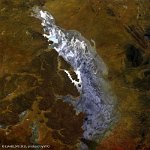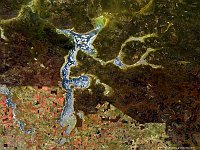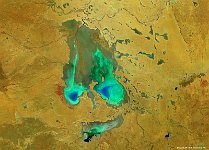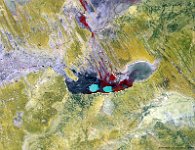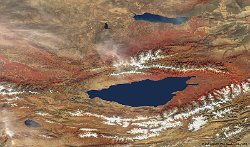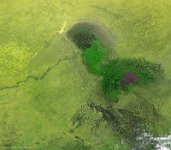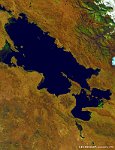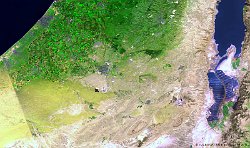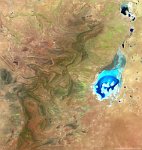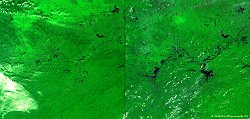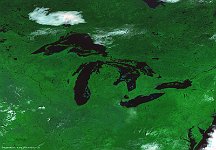39 / 52
Lake Chad, Africa
Lake Chad, once one of the largest lakes in the world, is a shallow remnant of an inland sea in ancient times, with many small islands, reedbeds, mud banks and a shoreline composed of marshes. Near the Sahara Desert, the water from its closed basin is of vital importance for the economy and livelihood of millions of people, in particular in the four surrounding countries of Chad, Cameroon, Niger and Nigeria.
As it has shrunk dramatically in size over recent decades, with recent signs of recovery, it is extensively monitored and studied internationally and is carefully managed by the inter-governmental Lake Chad Bassin Commission.
The above series of PROBA-V images, taken in March-April of 2014, 2015 and 2016, hence before the onset of the wet season, show a nearly constant size of the main, southern half of the lake.
Date: 03/2014->2016
Resolution: compositem
